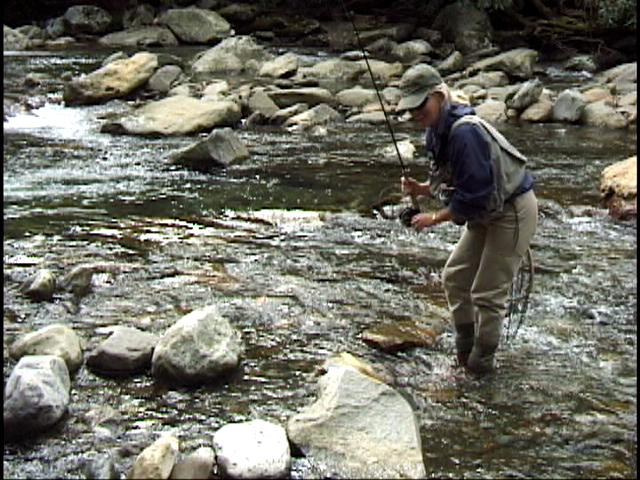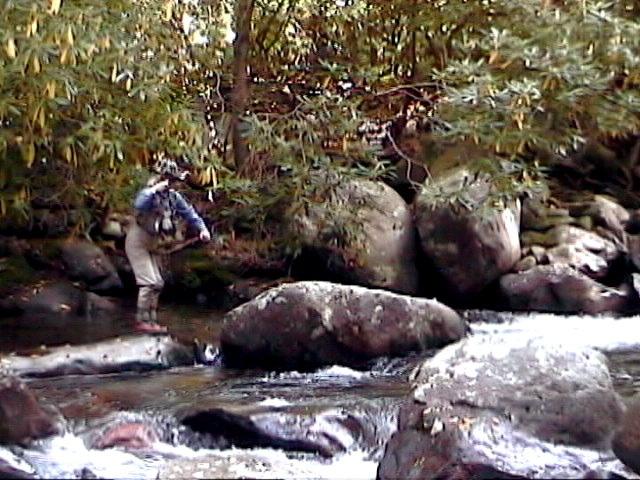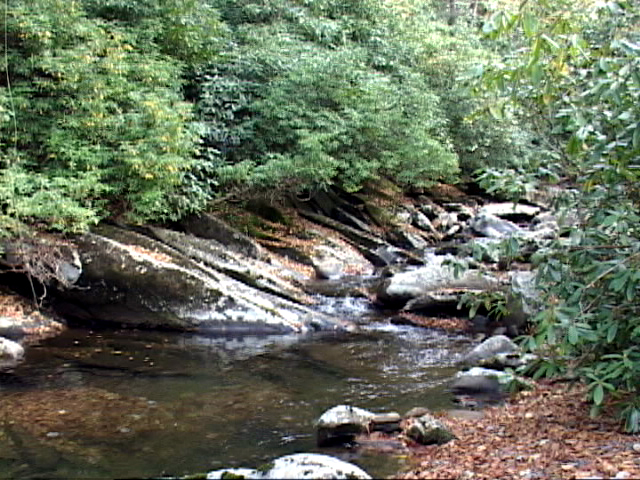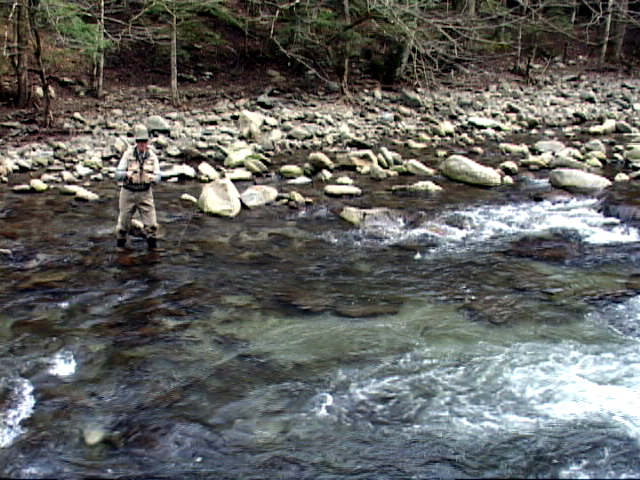

Description:
The West Prong of the Little Pigeon River is one of the best trout streams in Great Smoky Mountains National Park. It runs nearby highway #441 that crosses the park from Tennessee into North Carolina from near its beginning near the Chimney Top Trailhead to its exit from the park at Gatlinburg. Fly fishing the West Prong of the Little Pigeon River and its uppermost tributaries is possible from the park boundary to within a few miles of Newfound Gap.
Species:
Rainbow trout are present in the lower and middle sections of the stream and brook trout can be found in its uppermost part and some of its tributary streams.
Difficulty:
The difficulty of fishing Little Pigeon River ranges from easy to difficult depending on where and when you are fishing. Most of the stream is fairly easy to negotiate. Some of it isn’t. Most of it can be easily cast too, but in some places, it’s difficult to cast.
Popularity:
Little Pigeon River is probably the seond most (Little River being the most popular) popular fly-fishing destination in the Great Smoky Mountain National Park.
Main Portion and Tributaries:
In comparison to the other streams in the park, is ranges between being a medium to a large size stream. The West Prong of the Little Pigeon River contains mostly rainbow trout and both rainbows and brook trout in its upper portion and headwaters.
The Walkers Camp Prong and Road Prong of the Little Pigeon River flow together at the Chimney Trail crossing to form the main stream of the West Prong of the Little Pigeon River. The stream has a several tributary streams. Walkers Camp Prong is a small stream that is fairly easy to access from highway #441. It contains mostly brook trout and some rainbow trout.
Road Prong is a small tributary of the West Fork of the Little Pigeon River. It is accessible near the Chimney Tops Trailhead. It contains brook trout and some rainbow trout. You can access the Road Prong from the Road Prong Trail which follows along it for over 3 miles. When the trail first starts, the stream is not very accessible from it. Access is better upstream.
Alum Cave Creek is a small tributary of Walkers Camp Prong. It enters Walkers Camp at highway #441 and is accessible from the Alum Cave Trail. The stream contains small brook trout and a few rainbow trout.
Fighting Creek is a small stream that enters the West Prong of the Little Pigeon River near the park headquarters. It has a population of small rainbow trout.
You will find pocket water, usually on a steep declination, all the way from the lowest to the highest elevation found on the stream. Access ranges from extremely difficult to water alongside the highway. The streams are fairly easy to fish. Short, upstream cast usually work as long as you match the most plentiful and available insects or other foods and get a good, drag-free drift.
Fishing the Stream:
Fishing the stream is its lower section in the Sugarland area of the park is as easy as it gets fishing the West Prong of Little Pigeon River. The stream is moderately declined with a series of riffles, runs and pools. The stream is fairly wide and easy to wade and or progress along its banks in most areas. There are a few pools and runs and a lot of long riffles.
When the highway starts up the mountain from the Sugarland area, the river is separated by a few hundred yards from the highway. It follows a valley up a fairly steep decline until it crosses under the bridge at the Chimney’s Picnic Area a few miles upstream. The stream can be accessed via several quite walk areas that are marked along the highway that lead down to the river and some trails that are not marked. Access is easy again from the bridge upstream though the picnic area. The stream is tough to wade and tough to fish from the banks in many areas along its route up the mountain. There are huge boulders and deep pools with short plunges common.
At the upper upper end of the picnic area, the stream becomes difficult to follow along its banks or in the water. There are even more huge boulders and deep pools of water that block your progress. Moving upstream is possible, but it’s slow and tough going.
The stream can be accessed from the highway as it continues on up the mountain from the Chimney’s Picnic area but in most areas, the decline from the road down to the stream is very steep and rugged. Getting down from the highway to the river in some areas could be dangerous. For one to fish the river from the picnic area up to the chimney top trial, it a tough and difficult task. Some choose to access it at various points along the highway to fish certain sections of the river but it is difficult going anywhere it can be accessed. The West Prong of the Little Pigeon begins at the Chimney Top Trail where Road Prong and Walkers Camp Prong merge to form it.
Walkers Camp Prong runs along the highway for most of all of its journey up the mountain. In many areas it borders the highway. It is rarely father than a few hundred feet from the it. Some areas are easy to access and some are fairly difficult. There are many areas this little stream can be accessed from parking areas along the road. It has about fifty-fifty brook trout and rainbow trout. The stream hold lots of trout all the way to where it becomes very small and departs the highway a few miles below Newfoundland Gap. Alum Cave Creek joins the Walkers Camp Prong of the Little Pigeon River about half way up its route along the highway at the Alum Cave Trail. It contains a few small rainbow trout and brook trout.
Road Prong also starts at the Chimney Top Trail bridge where it joins the Walkers Camp Prong. Fishing upstream from that point in the streambed is possible on lower stream flows but difficult. You can access the Road Prong from the Road Prong Trail which leads off the Chimney Top Trail and follows Road Prong for over three miles. When the trail first starts, the stream is not very accessible from it. Access is better upstream. Road Prong is one of the better brook trout streams in the park.
Comments:
Little Pigeon River has the best of two different types of access. Paved roads and excellent backcounty trails. Its population of rainbow and brook trout makes it one of the prime Smoky Mountains National Park fly fishing destinations.
Copyright 2020 James Marsh

